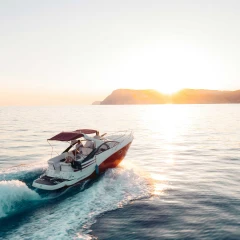













Jet Ski insurance isn’t just about checking a box—it’s about protecting your fun, your finances, and your freedom on the water. Whether you ride weekends at the lake or you’re out nearly every day in summer, insurance can help cover unexpected expenses from accidents, theft, or damage.
But what does it really cost?
The answer isn’t one-size-fits-all. Jet Ski insurance premiums vary based on several factors—including where you ride, what you ride, and how often. Here’s what you need to know to understand your options and budget smartly for personal watercraft (PWC) coverage.
Your premium is calculated based on a combination of risk factors. Some are tied to your personal history, while others relate to your watercraft and how it’s used. The most common rate factors include:
Where you ride plays a big role in your rate. Insurance costs tend to be higher in areas with:
For example, if you’re in a coastal state with busy waterways and year-round riding, expect premiums to reflect that added exposure.
As with auto insurance, younger or first-time Jet Ski owners often pay more. Why? Statistically, less experience = more claims. Over time, building a clean record on the water can help reduce your premiums.
Some insurers offer discounts for remaining claim-free for multiple years
All PWCs aren’t created equal. Insurers look at the make, model, engine size, and top speed of your Jet Ski, WaveRunner, or Sea-Doo. If you’re unsure what kind of coverage options apply to your specific watercraft, our PWC insurance guide breaks down what’s typically included in policies for Jet Skis and similar models. High-performance models (built for speed or racing) are typically more expensive to insure than standard recreational ones.
Other factors that influence cost:
Recreational riders tend to pay less than those using PWCs for rentals, tours, or competition. If your Jet Ski is docked at a private marina or shared with others, that can also impact your policy.
Key usage factors:
The more risk involved in your usage pattern, the higher your potential premium.
While coverage levels vary, a basic personal watercraft policy often includes:
Optional features may include uninsured boater coverage or gear protection for things like GPS, wetsuits, or trailers.
These extras are also common in standard boat insurance policies, and many PWC riders choose to bundle them for convenience.
While we’re not giving exact dollar amounts (those change by carrier, location, and personal profile), here’s what you can expect in terms of general cost brackets:
Remember, insurance rates for Jet Skis are generally affordable compared to auto or boat policies—but skipping coverage could cost far more in the event of an accident or theft.
Yes—most Jet Ski insurance policies are annual, not seasonal. That means your PWC is still protected when it’s in storage for the winter. There are usually no “lay-up” restrictions, so if a warm day sneaks in during fall or spring, you’re still covered if you hit the water.
If you’re shopping for coverage and want to keep premiums in check, consider these tips:
Working with a provider that understands PWC insurance can also help you find the right balance between price and protection.
Jet Ski insurance costs aren’t fixed—they’re flexible. Your premium depends on you, your watercraft, and how you use it. The good news? You’re in control of many of those variables.
Whether you’re looking for basic liability or full coverage peace of mind, there’s a policy out there that fits your ride and your budget. And in the long run, even modest coverage can save you big if something goes wrong on the water.
